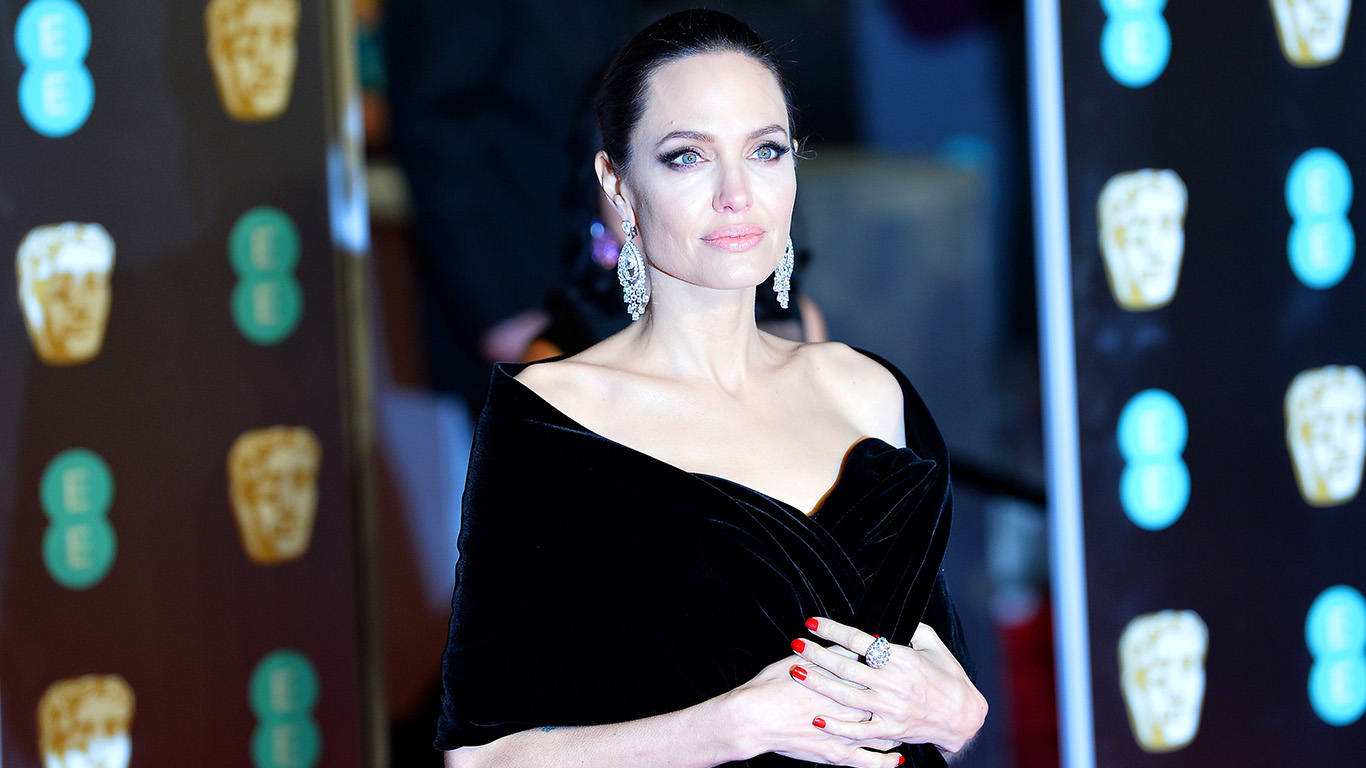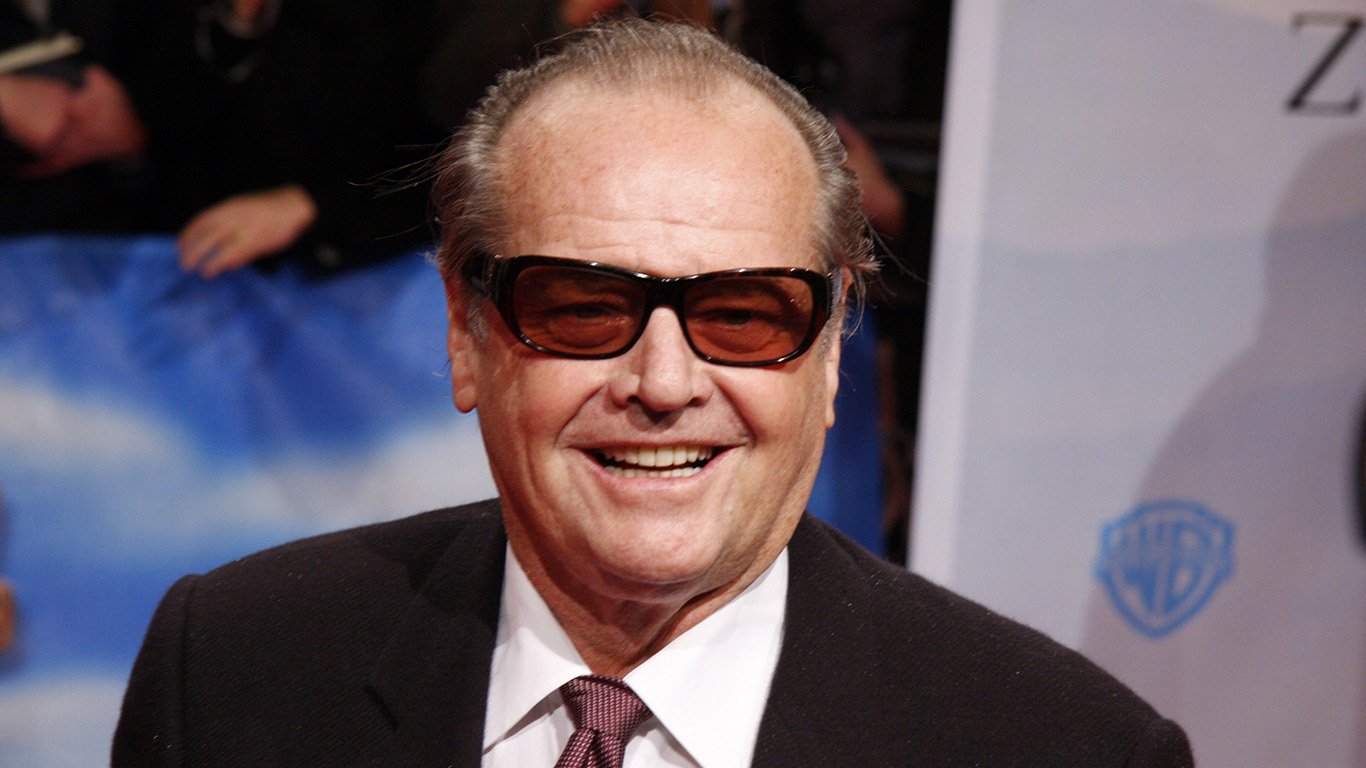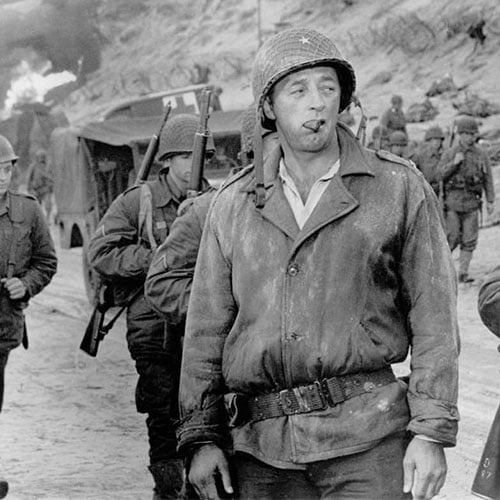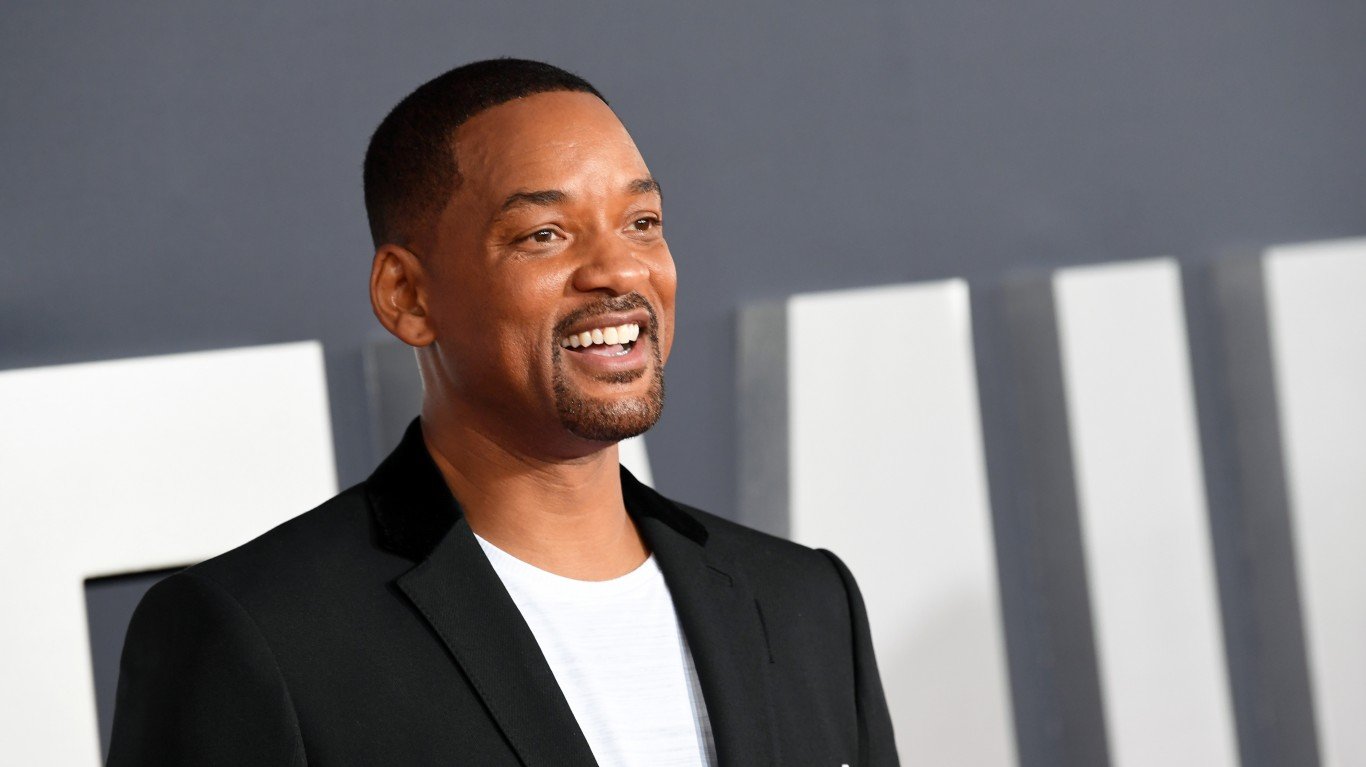

It’s easy to forget that even the world’s biggest movie stars had to start somewhere. Even A-listers like Tom Hanks and Robert De Niro began at zero, and had to work hard for years before scoring that breakout role and becoming the major celebrities they are today.
In most cases, folks start acting in high school or college, do a little bit of theater, score a couple TV roles before being cast in small film roles, and finally get that one big role in a film that’s successful enough to make them a major celebrity. It’s a tall, very difficult mountain to climb, and the vast, vast majority of struggling actors won’t make it to the summit. For some, it takes decades; these movie stars didn’t hit their stride until after they turned 40.
Some actors, like Ralph Macchio (Daniel in “The Karate Kid”) and Mark Hamill (Luke Skywalker in “Star Wars”), star in a massive breakout hit, but are never able to recreate that success in future films. Becoming a bankable movie star is like capturing lightning in a bottle, and that’s part of the reason why top-tier film stars like Brad Pitt and Tom Cruise are something of a dying breed. (These are the movie roles that launched some of today’s biggest Hollywood stars.)
Click here to find out what actors did after their most famous movie
To find out what did actors do after their most famous movie role, 24/7 Tempo reviewed information from IMDb,an online movie and TV database owned by Amazon. While many of these actors had starred in films previously, we used editorial discretion to determine which role truly made the actor a star.

Al Pacino
> First very famous movie: The Godfather (1972)
Before Al Pacino was cast in Francis Ford Coppola’s 1972 masterpiece “The Godfather,” he was primarily a stage actor trained at New York’s HB Studio by the legendary Lee Strasberg. He caught the attention of Coppola with his performance as a heroin addict in 1971’s “The Panic in Needle Park,” which was well-reviewed but not a smash hit. Since then, he’s acted in countless classics including “Serpico,” “The Godfather Part II,” “Dog Day Afternoon,” “Carlito’s Way,” and “Heat,” earning the Academy Award for Best Actor for his performance in “Scent of a Woman.”
[in-text-ad]

Brad Pitt
> First very famous movie: A River Runs Through It (1992)
Brad Pitt first caught the eye of filmgoers with his role as a cowboy hitchhiker in 2001’s “Thelma & Louise,” but he didn’t have his star turn until the following year, as the son of a minister growing up in the Rocky Mountains in Robert Redford’s coming-of-age film “A River Runs Through It.” The Western epic “Legends of the Fall” and vampire horror “Interview with the Vampire” followed in 1994 and the crime thriller “Se7en” and sci-fi classic “12 Monkeys” followed in 1995, cementing Pitt’s reputation as one of Hollywood’s most versatile and bankable young stars.

Cary Grant
> First very famous movie: Bringing Up Baby (1938)
Cary Grant (born Archibald Leach) began his career with crime films and dramas including “Blonde Venus” and “She Done Him Wrong,” but his career really didn’t take off until he began appearing in screwball comedies, including 1937’s “The Awful Truth” and 1938’s classic “Bringing Up Baby,” co-starring Katharine Hepburn. “His Girl Friday” and “The Philadelphia Story” followed in 1940, and all four of those films are widely regarded as among the best comedies of all time. By the time Grant began his working relationship with Alfred Hitchcock with 1941’s “Suspicion,” his role as a top Hollywood leading man was firmly enshrined.

Clark Gable
> First very famous movie: It Happened One Night (1934)
Known as “The King of Hollywood,” Clark Gable appeared in more than 60 films over a span of 37 years. An appearance in 1932’s “Red Dust” with Jean Harlow made him a movie star, but he became a true Hollywood icon with his performance as a roguish reporter in Frank Capra’s romantic comedy “It Happened One Night.” It was one of only three films to win all five major Oscars, and an urban legend claims that because Gable doesn’t wear an undershirt in the film, the sale of undershirts cratered. Five years later he starred in Rhett Butler in the timeless classic “Gone With the Wind.”
[in-text-ad-2]

Daniel Day-Lewis
> First very famous movie: My Left Foot (1989)
London-born method actor Daniel Day-Lewis slowly achieved leading man status throughout the 1980s, thanks to stellar performances in 1985’s “My Beautiful Laundrette” and “Room with a View,” as well as 1987’s “The Unbearable Lightness of Being.” But it was his performance as cerebral palsy-afflicted painter Christy Brown that truly put him on the map, earning him an Oscar for Best Actor. The now-retired actor was very selective in his film choices, only acting in 12 films since then, including “The Last of the Mohicans,” “The Age of Innocence,” “In the Name of the Father,” “There Will Be Blood,” and “Lincoln.”

Denzel Washington
> First very famous movie: Glory (1989)
Denzel Washington first became noticed on the ’80s medical drama “St. Elsewhere,” but his road to becoming one of Hollywood’s strongest leading men started with his star turn as a private in one of the first all-black Union Army regiments in 1989’s “Glory.” He won the Oscar for Best Supporting Actor for his performance, which he followed up in the ’90s with hits including “Malcolm X,” “Philadelphia,” “He Got Game,” and “Hurricane.”
[in-text-ad]

Dustin Hoffman
> First very famous movie: The Graduate (1967)
One of the most famous actors of his generation was largely unknown before being plucked from obscurity by director Mike Nichols to star in 1967’s seminal “The Graduate,” in which he played an aimless college graduate who’s seduced by an older woman. It was the highest-grossing film of the year, and led to starring roles in now-classic films including “Midnight Cowboy,” “All the President’s Men,” “Marathon Man,” “Kramer vs. Kramer,” “Tootsie,” “Rain Man,” and, of course, “Meet the Fockers.”

Emma Watson
> First very famous movie: Harry Potter and the Sorcerer’s Stone (2001)
Emma Watson had only acted in school plays before she was cast at the age of 9 as Hermione Granger in 2001’s “Harry Potter and the Sorcerer’s Stone.” Her star only continued to rise throughout the series, and she was a solid A-listed by the time it wrapped up in 2011. Since then, she’s starred in a wide array of films from the 2014 biblical epic “Noah” to 2017’s live action “Beauty & The Beast” to 2019’s adaptation of “Little Women,” and we have a hunch there’s a lot more to come.

Harrison Ford
> First very famous movie: Star Wars (1977)
Throughout the 1970s, Harrison Ford struggled with bit parts and a couple memorable small roles in “American Graffiti” and “The Conversation,” but it wasn’t until he was hired by “American Graffiti” director George Lucas to read lines for actors auditioning for his “space opera” that Lucas realized that he’d be perfect for the role of Han Solo. The role catapulted him to stardom, and it turned him into one of the era’s top leading men, starring in the “Indiana Jones” films and other classics including “Blade Runner,” “The Fugitive,” “Clear and Present Danger,” and “Air Force One.”
[in-text-ad-2]

Humphrey Bogart
> First very famous movie: The Maltese Falcon (1941)
Before he was one of the biggest stars of the Golden Age of Hollywood, Bogie spent more than a decade playing bit parts, mostly no-name gangsters. His breakthrough came in 1941, when he starred in the one-two punch of “High Sierra” (his last turn as a gangster) and the classic film noir “The Maltese Falcon.” “The Maltese Falcon” was quickly hailed as a masterpiece, and Bogart’s performance as a private detective made him one of Hollywood’s most in-demand actors. The following year’s “Casablanca” was his first romantic leading role, and classics including “The Big Sleep,” “The Treasure of the Sierra Madre,” “The African Queen,” and “The Caine Mutiny” followed.

Jack Nicholson
> First very famous movie: Five Easy Pieces (1970)
Before Jack was Jack, he was a struggling actor who landed roles primarily in B movies; he also had a memorable role as an alcoholic lawyer in “Easy Rider.” But he didn’t truly break out until he was cast as surly oil rig worker Bobby Dupea in Bob Rafelson’s 1970 classic “Five Easy Pieces.” The film was a smash and was nominated for four Oscars (including Best Actor for Nicholson), and catapulted Nicholson to stardom as one of the era’s great “anti-hero” actors in the same vein as James Cagney and Spencer Tracy. Plenty more iconic films followed, including “Chinatown,” “One Flew Over the Cuckoo’s Nest,” “The Shining,” “A Few Good Men,” and “The Departed.”
[in-text-ad]

James Cagney
> First very famous movie: The Public Enemy (1931)
Even though the real James Cagney was more of a song-and-dance man, early in his career he became typecast as a tough guy gangster, largely because of his breakthrough performance in 1931’s “The Public Enemy,” in which he plays a young man rising through the criminal underworld ranks. He continued playing gangsters through the ’30s (earning an Oscar nod for “Angels with Dirty Faces” along the way), until breaking out of the mold with his iconic portrayal of George M. Cohan in 1942’s “Yankee Doodle Dandy,” for which he won the Best Actor Oscar.

James Stewart
> First very famous movie: Mr. Smith Goes to Washington (1939)
Jimmy Stewart acted on Broadway and in summer stock productions, and had a memorable performance in Frank Capra’s 1938 ensemble comedy “You Can’t Take it With You,” before breaking out as a virtuous man who becomes a senator in the following year’s “Mr. Smith Goes to Washington.” This cemented his reputation as an “everyman,” and set him on a path to iconic status in leading roles in films including “The Philadelphia Story” and “It’s a Wonderful Life.” He also had a fruitful partnership with Alfred Hitchcock, starring in films including “Rope,” “Vertigo,” “The Man Who Knew Too Much,” and “Rear Window.”

Jane Fonda
> First very famous movie: Cat Ballou (1965)
Jane Fonda made her professional acting debut on Broadway in 1960. Through film performances in the following years (including one as a newlywed in “Period of Adjustment”), she slowly built her reputation as a go-to leading lady for light comedies. She truly broke out in 1965’s “Cat Ballou,” a now-classic Western comedy, which she quickly followed up with “Barefoot in the Park” and “Barbarella.” She transitioned to drama in the ’70s, with films including “Klute” and “Coming Home” (both of which earned her Oscars) and “The China Syndrome,” but again showed her comedic chops in 1980’s “9 to 5.”
[in-text-ad-2]

Jennifer Lawrence
> First very famous movie: The Hunger Games (2012)
Jennifer Lawrence may have won the Oscar for Best Actress for her breakout performance in 2010’s mystery drama “Winter’s Bone,” but she didn’t truly become an A-list movie star until she was cast as the protagonist Katniss Everdeen in 2012’s “The Hunger Games.” She reprised the role in its two sequels, and her career has gone up and down since then, with leading roles in films including “Joy,” “Passengers,” and “Red Sparrow.”

Jessica Chastain
> First very famous movie: The Help (2011)
Juilliard-trained Jessica Chastain made her film debut in the 2008 drama “Jolene,” but she truly broke out in 2011, when she was in a whopping six films. These included “Take Shelter,” “Tree of Life,” and the hit “The Help,” the latter of which earned her an Oscar nomination for her role as an aspiring socialite. Her performance as a CIA analyst in the following year’s “Zero Dark Thirty” also earned her an Oscar nod. She’s had a varied career since then, with leading roles in films including “Interstellar,” “The Martian,” and “The Eyes of Tammy Faye” for which she won the Oscar for Best Actress.
[in-text-ad]

Johnny Depp
> First very famous movie: Edward Scissorhands (1990)
Johnny Depp was actually encouraged to start acting by Nicholas Cage, and his first film role came in 1984’s “Nightmare on Elm Street.” His starring role in the TV show “21 Jump Street” made him a teen idol, but it wasn’t until he starred in 1990’s Tim Burton romantic fantasy “Edward Scissorhands” that he become a true movie star, even though he spent much of the next decade focusing on more art house-style films including “Benny & Joon,” “Ed Wood,” and “Fear and Loathing in Las Vegas.” His iconic role as Captain Jack Sparrow in “Pirates of the Caribbean” made him one of the 2000’s most bankable movie stars, although his reportedly abusive relationship with Amber Heard and a string of high-profile flops have dimmed his star recently.

Judy Garland
> First very famous movie: The Wizard of Oz (1939)
Judy Garland (born Frances Ethel Gumm) was only 16 years old when she gave one of the most iconic performances of all time as Dorothy in 1939’s “The Wizard of Oz,” but she was already an industry veteran by then, having appeared in five films. “Oz” propelled her to true leading lady status, however, and she followed up the role with great performances in a string of MGM films straight through to 1950, most notably “Meet Me in St. Louis” and a string of hits with Mickey Rooney including 1943’s “Girl Crazy” (even though their partnership actually began earlier, with 1938’s “Love Finds Andy Hardy”). Her final film performance came with 1963’s “I Could Go On Singing.”

Julia Roberts
> First very famous movie: Pretty Woman (1990)
One of Hollywood’s biggest stars for more than 30 years, Julia Roberts first caught the attention of audiences with compelling performances in lighthearted late-’80s films “Mystic Pizza” and “Steel Magnolias.” Her performance as a down-on-her-luck Hollywood prostitute in the 1990 smash hit “Pretty Woman” catapulted her to stardom, and earned her an Oscar nomination for Best Actress. Her light has barely dimmed since then, with leading roles in blockbusters including “My Best Friend’s Wedding,” “Notting Hill,” “Runaway Bride,” and “Erin Brockovich,” which won her the Oscar for Best Actress.
[in-text-ad-2]

Katharine Hepburn
> First very famous movie: The Philadelphia Story (1940)
Named the greatest female star of classic Hollywood by the American Film institute, Katharine Hepburn arrived in Hollywood in 1932 and within a year she’d appeared in three films, including “Morning Glory,” a breakout that earned the actress her first Best Actress Oscar. A series of commercial failures followed, but she was the mastermind of her own comeback with 1940’s “The Philadelphia Story,” which she bought the film rights to on the condition that she be the star. It was a huge hit, and led to her notable collaboration with Spencer Tracy, which spanned 26 years and nine films. Leading roles in iconic films continued later in life, including “The African Queen,” “The Lion in Winter,” and “On Golden Pond.”

Kirk Douglas
> First very famous movie: Spartacus (1960)
By the time “Spartacus” came out in 1960, Kirk Douglas was 44 years old and had already firmly established himself as a leading box-office star for his intense, explosive performances in films including 1949’s “Champion,” 1951’s “Ace in the Hole” and “Detective Story,” 1956’s “Lust for Life” (in which he portrayed Vincent Van Gogh), and the 1954 smash “20,000 Leagues Under the Sea.” But when we think of Kirk Douglas, we think of him in his Roman garb in Stanley Kubrick’s historical epic “Spartacus.” Even though he suffered a debilitating stroke at age 79, he kept acting well into his 90s.
[in-text-ad]

Leonardo DiCaprio
> First very famous movie: Titanic (1997)
Leonardo DiCaprio first gained the attention of audiences with his 1991 role as a homeless boy in the TV series “Growing Pains” at age 17, and by the time he was cast in 1997’s “Titanic” he was already one of Hollywood’s most promising young actors, giving great performances in “What’s Eating Gilbert Grape,” “The Basketball Diaries,” and “Romeo + Juliet” opposite Claire Danes, firmly cementing his teen heartthrob status. But “Titanic” made him one of the biggest movie stars on earth, a role he continues to play with hits including “Catch Me if You Can,” “The Aviator,” “The Departed,” “The Wolf of Wall Street,” “The Revenant” (for which he won the Best Actor Oscar), and “Once Upon a Time in…Hollywood.”

Marilyn Monroe
> First very famous movie: Gentlemen Prefer Blondes (1953)
The most famous sex symbol of all time, Marilyn Monroe was a top-billed actress for a decade leading up to her untimely 1962 death. She began her career with a series of minor film roles, but stardom came soon after signing a contract with Fox in 1950. She rose to fame starring in both comedies and dramas including “Monkey Business” and “Niagara,” and her performance as a showgirl in 1953’s “Gentlemen Prefer Blondes” (with her iconic performance of “Diamonds are a Girl’s Best Friend”), which she quickly followed with “How to Marry a Millionaire,” made her a true “blonde bombshell” and star comedienne. The hit “The Seven Year Itch” followed in 1955, as well as “Some Like it Hot” in 1959. Her final film, “The Misfits,” was released in 1961.

Marlon Brando
> First very famous movie: A Streetcar Named Desire (1951)
“Stellaaaa!” Method actor Marlon Brando was a young, relatively unknown method actor when he was cast in the film adaptation of his most iconic Broadway role, as Stalney Kowalski in Tennessee Williams’ “A Streetcar Named Desire.” His towering, powerful performance immediately made him one of Hollywood’s top sex symbols, and earned him his first Oscar nomination. His star continued to rise through lead roles in “Viva Zapata!,” “Julius Caesar,” and 1953’s “The Wild One,” which influenced a generation of rock n’ rollers and made sales of leather jackets skyrocket. 1955’s “On the Waterfront” was a massive success and earned him the Oscar for Best Actor, cementing his status as one of the finest actors of his generation.
[in-text-ad-2]

Meryl Streep
> First very famous movie: Kramer vs. Kramer (1979)
Widely regarded as the best actress of her generation, Meryl Streep had a successful career on Broadway before making her film debut in a tiny role in 1977’s “Julia.” She achieved wider recognition with roles in “The Deer Hunter” and “Holocaust,” and became widely known for her starring role alongside Dustin Hoffman in “Kramer vs. Kramer,” about a divorcing couple. Her performance was widely praised and earned her the Oscar for Best Supporting Actress, and the film won Best Picture. She’s since given iconic performances in films including “Sophie’s Choice,” “Silkwood,” “Postcards From the Edge,” “The Bridges of Madison County,” “Adaptation.,” “The Devil Wears Prada,” and “Doubt,” among many others.
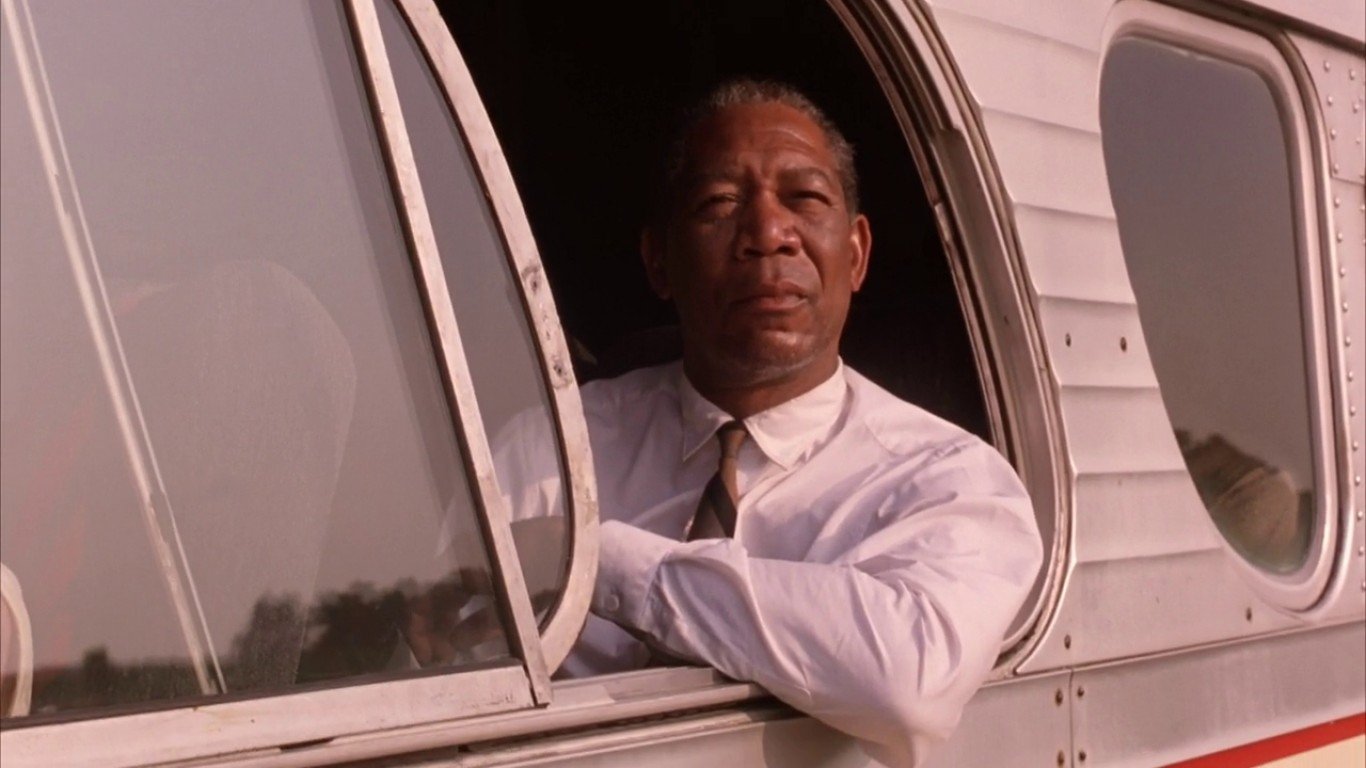
Morgan Freeman
> First very famous movie: The Shawshank Redemption (1994)
Morgan Freeman first broke out as a star in 1987’s “Street Smart,” a role in which he played a hustler and earned an Oscar nod for Best Supporting Actor. Then came four additional great performances, in “Glory,” “Lean on Me,” “Driving Miss Daisy,” and “Unforgiven.” So by the time he was cast in “The Shawshank Redemption,” he was already a top-tier, well-respected actor. His role as contraband smuggler “Red” Redding, who befriends Tim Robbins’ convicted murderer, put him on the map, however, and led to additional star turns in films including “Seven,” “Bruce Almighty,” “Million Dollar Baby,” “Gone Baby Gone,” and as Nelson Mandela in “Invictus.”
[in-text-ad]
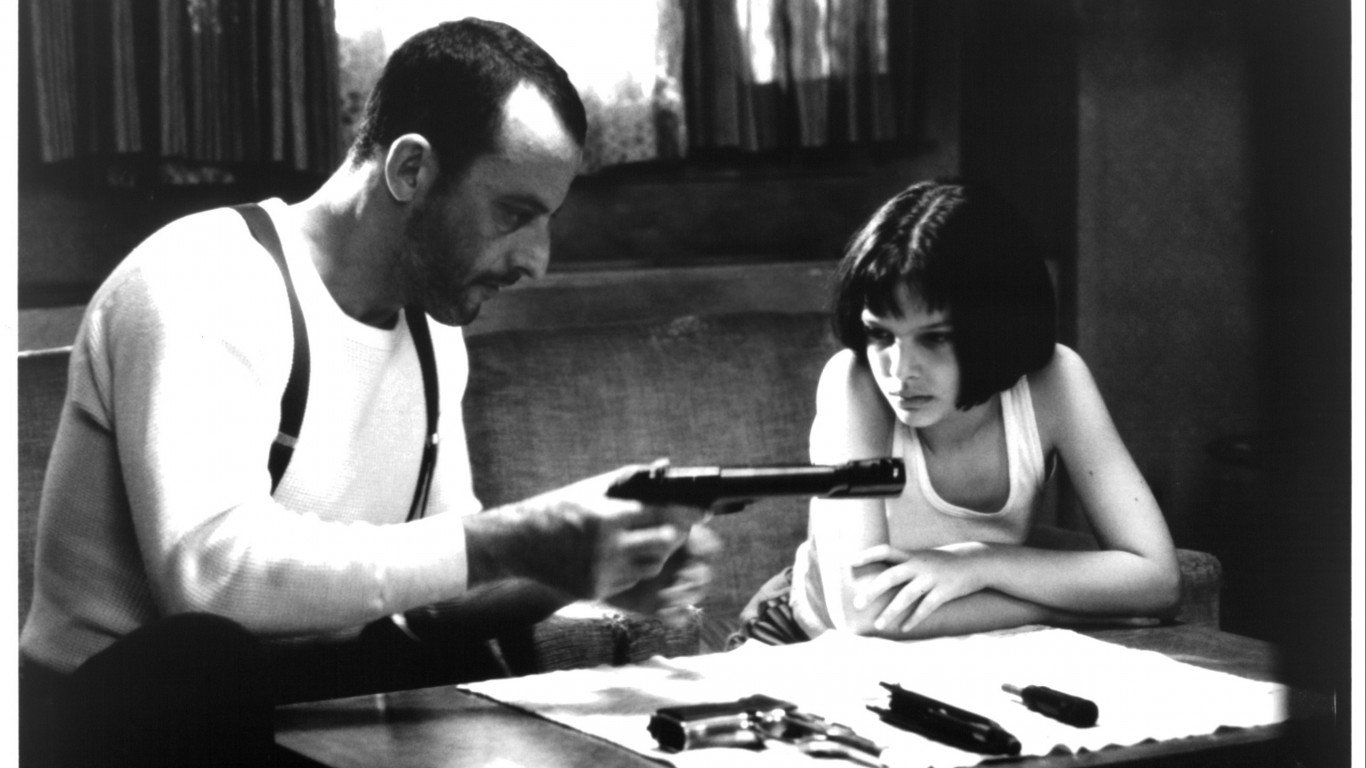
Natalie Portman
> First very famous movie: Léon: The Professional (1994)
Natalie Portman burst onto the scene in a big way at the age of 12, with 1994’s “Léon: The Professional,” in which she starred alongside Jean Reno as the protegée of his hitman character. Her performance was widely hailed, and international recognition came five years later, when she starred as Padmé Amidala in “Star Wars: Episode I – The Phantom Menace.” She was nominated for the Best Actress Oscar for her performance as a stripper in 2004’s “Closer,” won Best Actress for playing a troubled ballerina in 2010’s “Black Swan,” and since then has starred in additional films including “Thor,” “Jackie,” and “Annihilation.”

Nicole Kidman
> First very famous movie: Eyes Wide Shut (1999)
Born in Hawaii to Australian parents and raised in Sydney, Nicole Kidman started off her career acting in a string of hit films, including 1995’s “Batman Forever” and “To Die For,” “The Peacemaker,” and “Practical Magic.” So she was already well-known to audiences when she starred alongside her then-husband Tom Cruise in Stanley Kubrick’s final film, the much-hyped “Eyes Wide Shut.”

Olivia Colman
> First very famous movie: The Favourite (2018)
Olivia Colman spent years as one of Britain’s most beloved TV character actresses, starring in acclaimed shows including “Peep Show,” “Green Wing,” “Twenty Twelve,” “Broadchurch,” “The Night Manager,” and “The Crown” (as Queen Elizabeth). She also appeared in plenty of films during this time, including 2007’s “Hot Fuzz,” 2011’s “The Iron Lady,” and 2017’s “Murder on the Orient Express,” but she truly broke through into A-list territory with her tour de force performance as Queen Anne in the 2018 black comedy “The Favourite.” She won the Best Actress Oscar for her performance, and has since been nominated for her performances in two additional films, “The Father” and “The Lost Daughter.”
[in-text-ad-2]

Reese Witherspoon
> First very famous movie: Legally Blonde (2001)
Today, Reese Witherspoon is the world’s wealthiest actress and a highly successful producer and entrepreneur, but she started her film career with the 1991 coming-of-age drama “Man in the Moon.” Her performances in the critically-acclaimed “Cruel Intentions” and “Election” brought her additional recognition, but her performance as Elle Woods in 2001’s “Legally Blonde” put her on the map. She followed it up with a successful sequel and additional hits including “Sweet Home Alabama” and “Walk the Line” (for which she earned the Best Actress Oscar), and in recent years she’s appeared primarily on television, in series including “Big Little Lies,” “Little Fires Everywhere,” and “The Morning Show.”
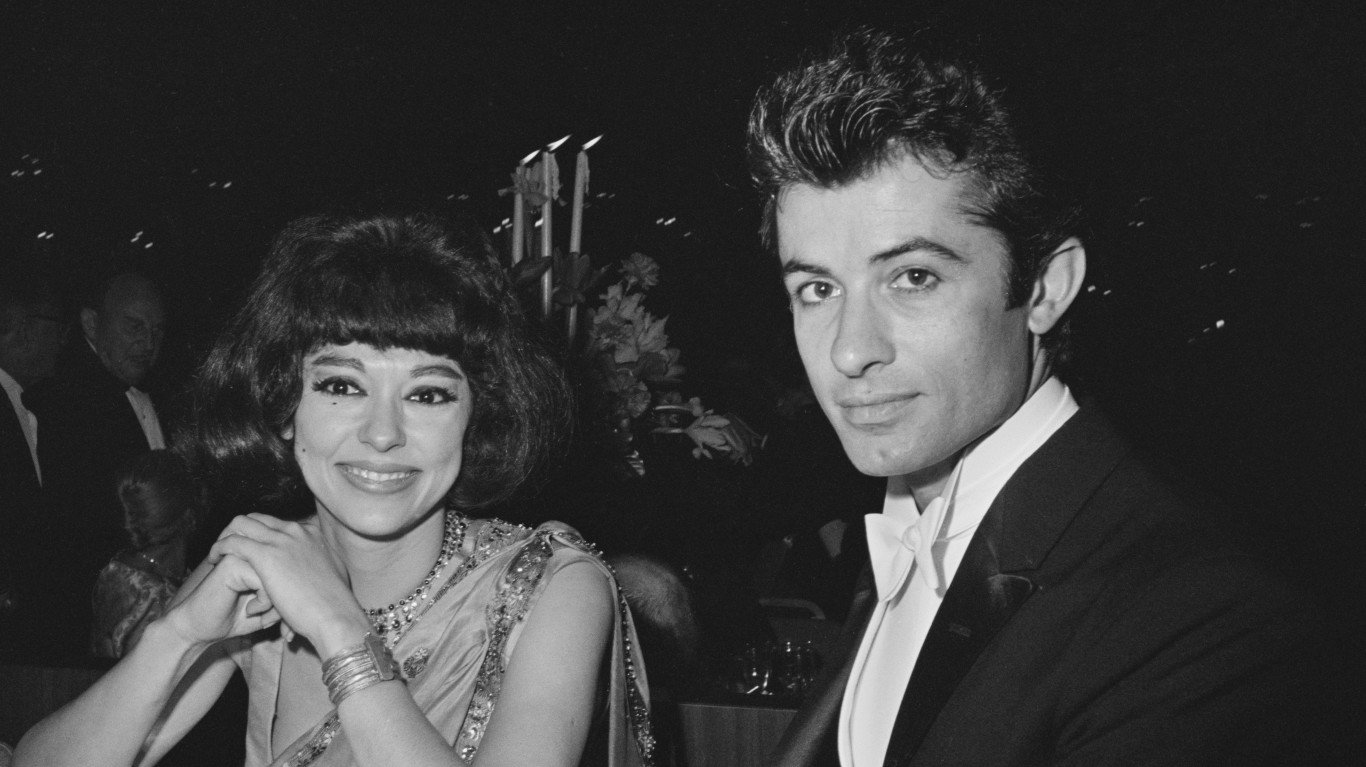
Rita Moreno
> First very famous movie: West Side Story (1961)
Puerto Rican-born American actress, dancer, and singer Rita Moreno began her career at the tail end of the Golden Age of Hollywood, appearing in small roles in films including “Singin’ in the Rain” and “The King and I.” She achieved stardom by appearing as Anita in the 1961 film adaptation of “West Side Story,” for which she won the Oscar for Best Supporting Actress. She didn’t make another film for eight years following her win, but in the 1970s she starred in Mike Nichols’ “Carnal Knowledge” as well as the PBS children’s series “The Electric Company.” Since then, she’s primarily appeared on TV shows including the Nexflix series “One Day at a Time;” she also had a role in Steven Spielberg’s 2021 adaptation of “West Side Story,” six decades after she starred in the original.
[in-text-ad]

Robert De Niro
> First very famous movie: Mean Streets (1973)
Manhattan-born Robert De Niro’s first major role was in the 1968 film “Greetings,” and he received praise for his role as a baseball player in the 1973 sports drama “Bang the Drum Slowly.” But it wasn’t until he partnered with Martin Scorcese to portray a small-time criminal in “Mean Streets” that he caught critics’ attention as a truly great actor. The following year brought his Oscar-winning performance as a young Vito Corleone in “The Godfather Part II,” and his reputation as one of the best actors of his generation grew with “Taxi Driver,” “The Deer Hunter,” “Raging Bull,” “Goodfellas,” and “Casino.”
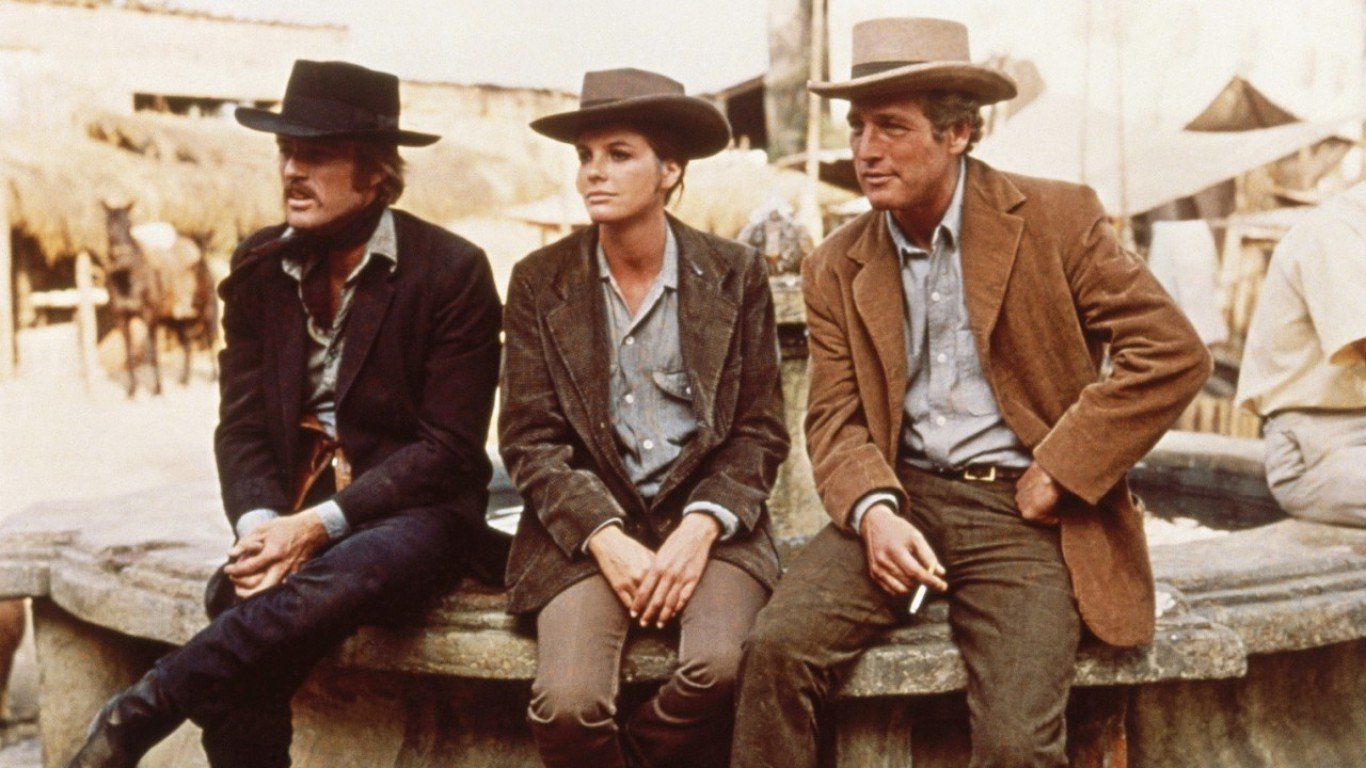
Robert Redford
> First very famous movie: Butch Cassidy and the Sundance Kid (1969)
Robert Redford began his career on the stage, achieving Broadway success with Neil Simon’s 1963 hit “Barefoot in the Park.” Roles in films including “Inside Daily Clover” with Natalie Wood followed, but it was his performance alongside Paul Newman in 1969’s “Butch Cassidy and the Sundance Kid” that propelled him to stardom. Critical hits including “Jeremiah Johnson,” “The Sting,” and “All the President’s Men” followed in the ’70s; the ’80s brought his directorial debut “Ordinary People” (for which he won the Best Director Oscar) and a leading role in “Out of Africa,” and he also went on to co-found the Sundance Film Festival. Today he’s regarded as one of the best actors and directors of the past 50 years.

Sidney Poitier
> First very famous movie: In the Heat of the Night (1967)
Due to the success of films including “Blackboard Jungle,” “The Defiant Ones,” “Lillies of the Field” (for which he became the first Black actor to win the Best Actor Oscar), “Porgy and Bess,” “A Raisin in the Sun,” “To Sir With Love,” and “Guess Who’s Coming to Dinner,” Sidney Poitier was already one of the most popular A-list actors in Hollywood by the time he was cast as a Black police detective who becomes involved in a smal-town murder investigation in 1967’s “In the Heat of the Night.” His quote, “They call me Mister Tibbs!” went down as one of the most famous in film history. He went on to direct several major films (primarily comedies) including 1980’s “Stir Crazy,” and took primarily smaller roles in his later years.
[in-text-ad-2]
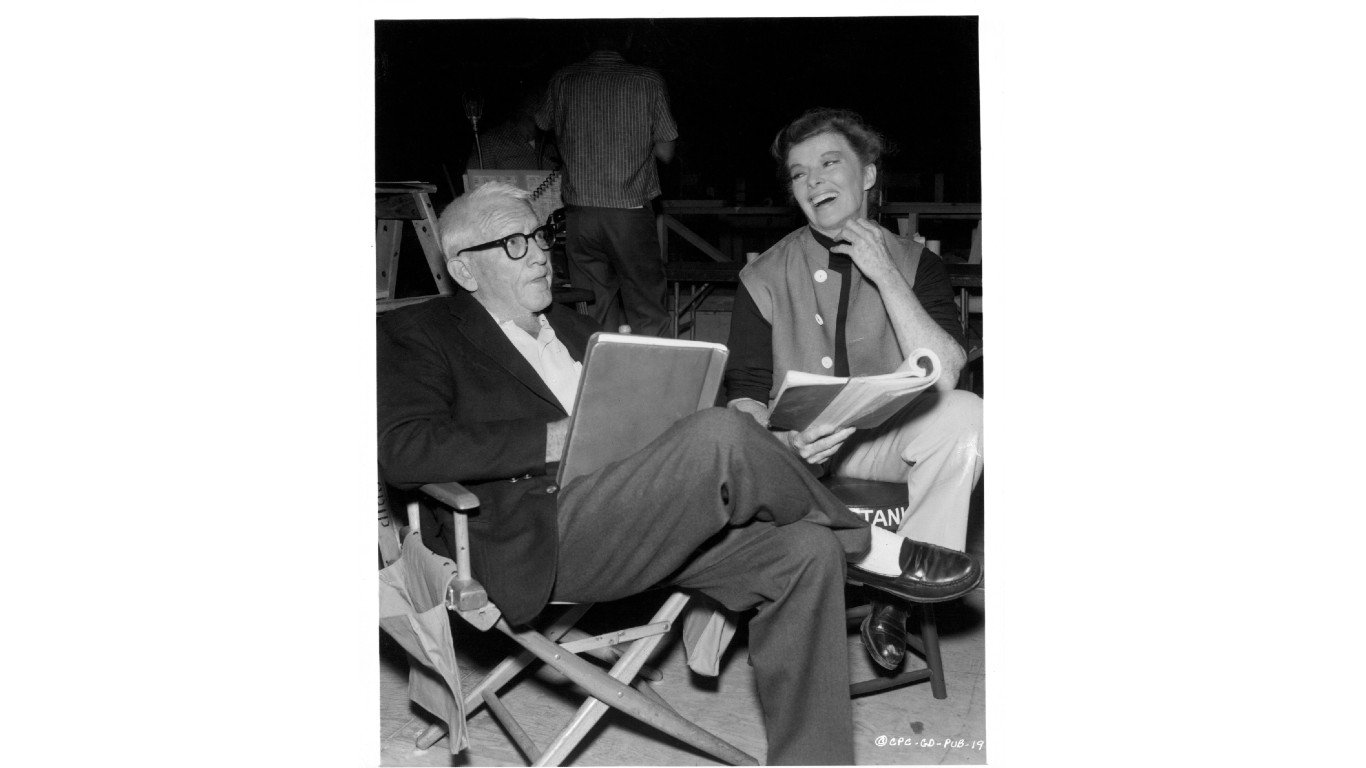
Spencer Tracy
> First very famous movie: Captains Courageous (1937)
Spencer Tracy spent a lot of time paying his dues in stock companies, on Broadway, and in more than 25 films (many of which were ignored at the box office) before he finally had his breakthrough hit with 1936’s “Fury;” the classics “Captains Courageous” and “Boys Town” followed in 1937 and ’38, respectively. He won Best Actor Oscars for both, and by the early 1940s he was one of MGM’s biggest stars. 1942’s “Woman of the Year” was his first film in a long partnership with Katharine Hepburn, and additional hits included “Boom Town,” “Edison the Man,” “Father of the Bride,” “Inherit the Wind,” and “Guess Who’s Coming to Dinner.”

Steve McQueen
> First very famous movie: The Magnificent Seven (1960)
“The King of Cool” and one of the greatest antiheroes of the ’60s, Steve McQueen became well-known on TV, acting in shows including “Tales of Wells Fargo” and his 1958 breakout “Wanted: Dead or Alive.” He quit that one in 1968 after co-starring in the smash hit western, “The Magnificent Seven,” alongside Yul Brenner and Eli Wallach. His leading role in his next film, “The Great Escape,” earned him top-tier Hollywood status, and later hit films included “Nevada Smith,” “The Sand Pebbles,” the iconic “Bullitt,” and “The Thomas Crown Affair.”
[in-text-ad]

Tom Hanks
> First very famous movie: Big (1988)
One of the most beloved film stars on earth and a certified national treasure, Tom Hanks got his start on television, starring in “Bosom Buddies” with Peter Scolari. He had leads in several films, including the surprise hits “Splash” and “Bachelor Party,” before his true breakout, playing a boy who turns into an adult overnight in 1988’s “Big.” It was a huge hit that put Hanks on the map and earned him a Best Actor Oscar nomination, and the rest is history, with additional hits including “Forrest Gump,” “Apollo 13,” “Toy Story,” “Saving Private Ryan,” and “The Da Vinci Code.”

Viola Davis
> First very famous movie: Doubt (2008)
The first Black woman to earn the Triple Crown of Acting (Emmy, Tony, and Oscar), Viola Davis exploded onto the scene in “Doubt” in 2008 as the mother of the only Black child in a church’s parish school. Even though she was only in the film for one scene, her powerful performance earned her an Academy Award nomination. She went on to win worldwide recognition with films including “The Help” and “Fences,” and has since starred in “Ma Rainey’s Black Bottom” and the upcoming “The Woman King.”

Will Smith
> First very famous movie: Independence Day (1996)
Will Smith began his career as a rapper named the Fresh Prince, became a TV star with “The Fresh Prince of Bel Air,” and became a full-fledged movie star with 1996’s mega-blockbuster “Independence Day,” in which he led an ensemble cast defending the earth against an alien invasion. The following year’s “Men In Black” clinched his reputation as one of the era’s most bankable movie stars, confirmed by the success of films including “Enemy of the State,” “Ali,” “Hitch,” “I Am Legend,” and “Hancock.” His portrayal of Venus and Serena Williams’ father in “King Richard” won him the 2022 Academy Award for Best Actor, although his win was slightly overshadowed by his slapping Chris Rock.
Take This Retirement Quiz To Get Matched With A Financial Advisor (Sponsored)
Take the quiz below to get matched with a financial advisor today.
Each advisor has been vetted by SmartAsset and is held to a fiduciary standard to act in your best interests.
Here’s how it works:
1. Answer SmartAsset advisor match quiz
2. Review your pre-screened matches at your leisure. Check out the
advisors’ profiles.
3. Speak with advisors at no cost to you. Have an introductory call on the phone or introduction in person and choose whom to work with in the future
Take the retirement quiz right here.
Thank you for reading! Have some feedback for us?
Contact the 24/7 Wall St. editorial team.
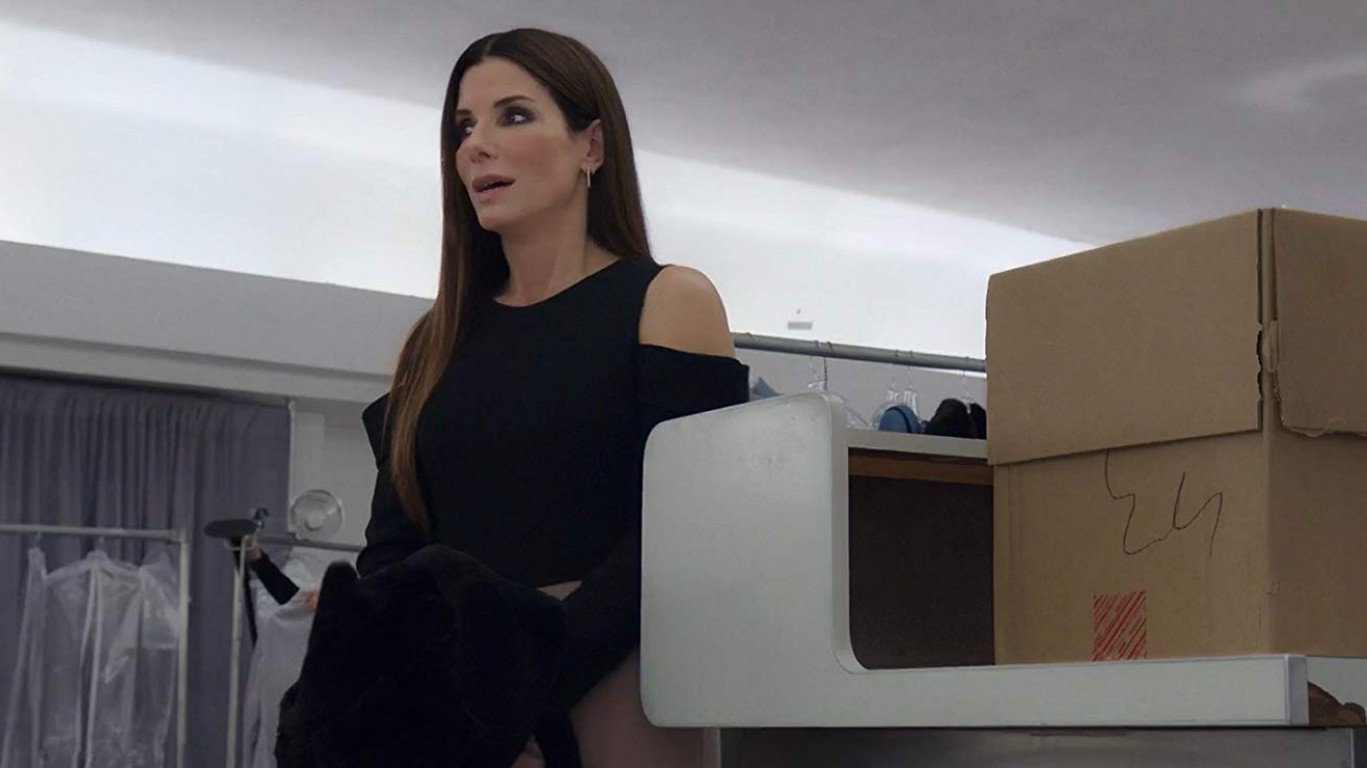 24/7 Wall St.
24/7 Wall St.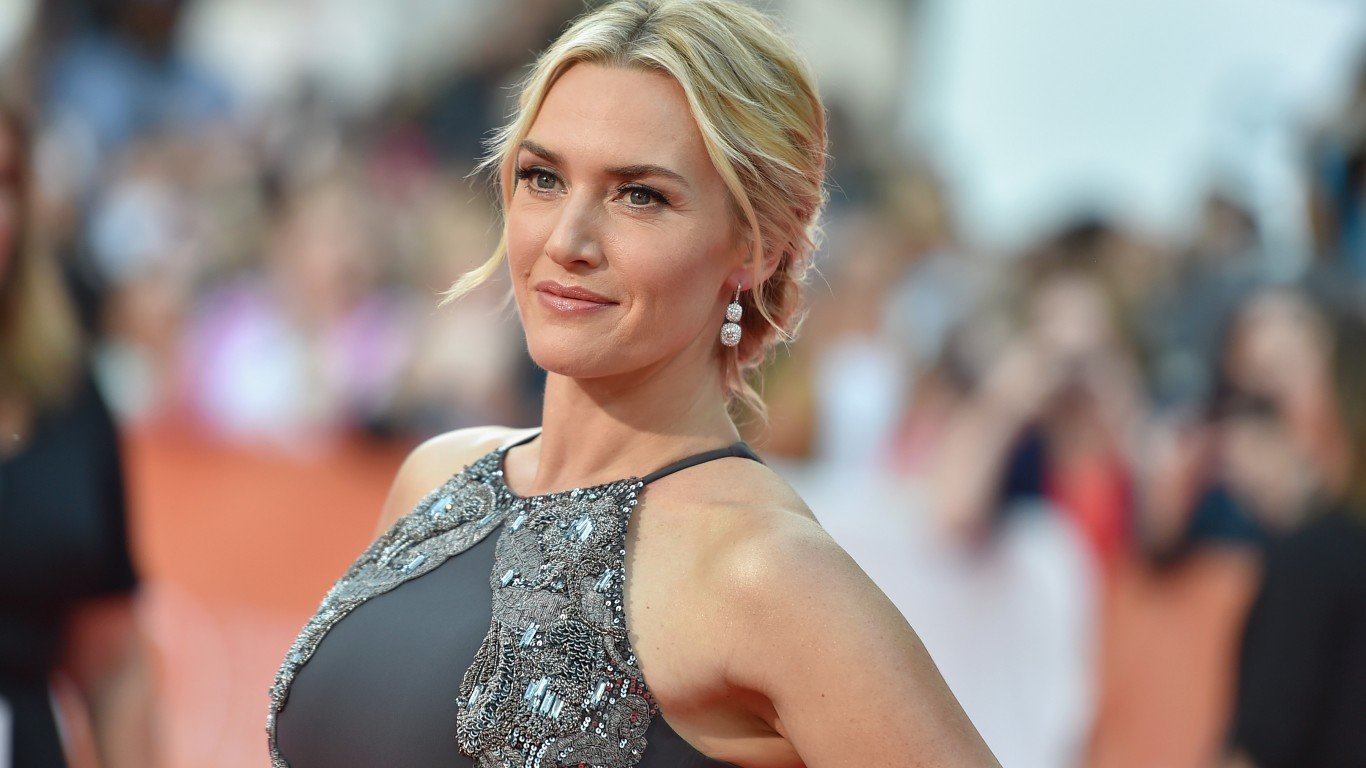 24/7 Wall St.
24/7 Wall St.